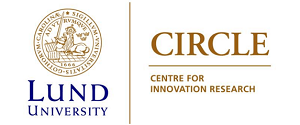No 2016/7: From technological to symbolic innovation? Open source, Maker Movement and global demand for 3D printers
Claudio Fassio () and Luca Grilli ()
Additional contact information
Claudio Fassio: CIRCLE, Lund University; BRICK, Collegio Carlo Alberto
Luca Grilli: Politecnico di Milano, Department of Management, Economics and Industrial Engineering
Abstract: The recent turbulent evolution of the 3D printing industry is strictly related with two important phenomena: the widespread adoption of Open Source (OS) business models by new companies on the one hand, and the increasing importance of communities of users, such as the so-called Maker Movement, on the other. This study is the first to analyze the factors that drive the adoption of different types of 3D printers and argues that, in line with the classification introduced by Hirschman (1982), 3D printers should be considered as both technological and symbolic innovations in order to understand their adoption patterns. While technological innovations are adopted for their technical utility, the adoption of symbolic product innovations serves mainly to communicate a novel social meaning to a specific pre-existing product. The recent growth of communities of interest that strongly endorse the OS philosophy, like the Maker Movement, has led 3D OS printers to gain many of the features of symbolic innovations. Taking advantage of an international sample of 3D printer users from 39 different countries, our study shows that while the high-quality 3D printers of established producers (3D proprietary printers) are mainly adopted for technologically-driven reasons, the adherence to the Maker Movement and to its ethical values is an important driver behind the adoption of 3D OS printers. Moreover this is especially true for the users that started to use 3D printers after 2011, when the Maker philosophy started gaining great momentum. The findings show that the global demand for 3D printer is increasingly fragmented between users driven by different motivations in their adoption choices. In this respect, the study advances our understanding about the interplay between OS business models, communities of interest and innovation adoption and inform managers on the importance of recognizing and exploiting the novel symbolic nature of 3D OS printers.
Keywords: 3D printing; symbolic product innovations; communities of users
36 pages, February 15, 2016
Questions (including download problems) about the papers in this series should be directed to Torben Schubert ()
Report other problems with accessing this service to Sune Karlsson ().
RePEc:hhs:lucirc:2016_007This page generated on 2024-09-13 22:16:05.

